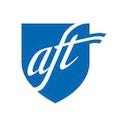Learning a new language for better school discipline
By Sarah Vogelstein

Editor’s note: With support from an AFT Innovation Fund grant, Sarah Vogelstein and other members of AFT Local 3267, the Jefferson Elementary Federation of Teachers, are beginning to implement restorative practices in their schools. To learn more about these practices, see the Winter 2015–2016 issue of the AFT’s American Educator magazine.
“Restorative practices.” What does that even mean?
When I first learned about restorative practices, I was working exclusively with students with severe emotional disturbance. Anger I knew. Rage, even. Withdrawal, erratic behavior. Distrust.
I also knew that the only way to reach students like mine, to tap the potential hiding behind all that emotion, was to build relationships. It turns out restorative practices are exactly that: a set of practices and behaviors that help build relationships and trust among teachers and students.
For example, my students have particular triggers that are hard for them to resist. Stand too close to one student, for instance, when you’re questioning his work and his anxiety level explodes. He may lash out. Mention parents as possible homework helpers to another student and she shuts down.
Because I have developed relationships with my students, I understand these triggers. I don’t stand too close to that one student because I know he is physically threatened by neighborhood kids and goes into fight mode when you get too close. I avoid talking about parents to the other student because I know her parents are overworked and unavailable, and she is sad and confused about that. And if I don’t know what might have triggered an incident, I try and find the root problem before jumping right to punitive consequences.
Some of this is common sense, and it applies to all students, not just mine. Get to know them. Show them you are interested in them as individuals. Build trust.
Restorative practices go further and give us tools to share. Things like talking circles, when students discuss their feelings around an incident with everyone who was involved; writing apologies and reflections about how behavior affected others; and helping students consider how they can “make it right” if they’ve hurt someone at school. It extends relationship-building throughout a school, student to student, student to teacher, and student to administrator, custodian, bus driver, security officer — everyone. It creates a culture of trust and cooperation.
Restorative practices extend relationship-building and create a culture of trust and cooperation.
That’s why I’m excited that the Jefferson Elementary School District in Daly City, Calif., is beginning to implement restorative practices more widely. Sometimes students circle up and talk about their feelings, and sometimes they have restorative consequences for their actions, like community service. Some administrators are supportive.
But the practice is not universal — we still have a lot of punitive consequences, suspensions and detentions here. After all, teachers are anxious to restore order to their classrooms, and these are the tools they know best. We still have police officers, who help with school security, stuck in the language of law enforcement, calling 11-year-old students “perpetrators.” After all, that has been their training.
But now we need new solutions, new training and new language. I’ve seen how well restorative practice works with my own students. I am so sure of its success that, as a special education teacher for students with emotional challenges, I advocate for restorative consequences in all their individualized education plans. How much better will it be when the entire school can embrace restorative practices this way?
We need to stop suspending students. We need to build a stronger community for them and with them.
I believe restorative practices will help us do that.

Sarah Vogelstein is a special education teacher in the Jefferson Elementary School District in Daly City, Calif., for students in grades 6–8 with learning disabilities, autism, attention deficit hyperactivity disorder, emotional disturbance and other challenges. She is the special education representative on the executive board of AFT Local 3267, the Jefferson Elementary Federation of Teachers, which is using an AFT Innovation Fund grant to implement community school services, including restorative practices, in its schools. Read more about the inspiration for the local’s commitment to restorative practices here.

